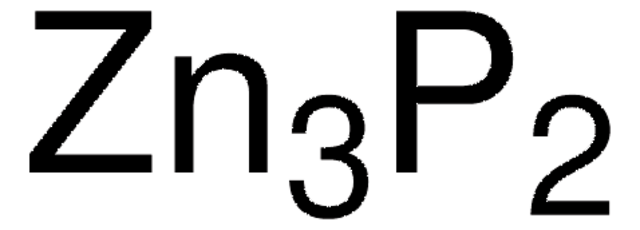449962
Potassium bromide
anhydrous, powder, 99.999% trace metals basis
Synonym(s):
Bromide salt of potassium, Potassium monobromide
Sign Into View Organizational & Contract Pricing
All Photos(1)
About This Item
Linear Formula:
KBr
CAS Number:
Molecular Weight:
119.00
EC Number:
MDL number:
UNSPSC Code:
12352302
eCl@ss:
38050405
PubChem Substance ID:
NACRES:
NA.23
Assay:
99.999% trace metals basis
grade:
anhydrous
form:
powder
Recommended Products
grade
anhydrous
Quality Level
vapor pressure
<0.01 mmHg ( 20 °C)
1 mmHg ( 795 °C)
Assay
99.999% trace metals basis
form
powder
impurities
≤15.0 ppm Trace Metal Analysis
mp
734 °C (lit.)
SMILES string
[K+].[Br-]
InChI
1S/BrH.K/h1H;/q;+1/p-1
InChI key
IOLCXVTUBQKXJR-UHFFFAOYSA-M
Looking for similar products? Visit Product Comparison Guide
General description
Potassium bromide is an ionic salt that is used as a capping agent/medium in the preparation of nanomaterials such as ZrB2 and palladium nanoparticles.. It is also widely used as a source of bromine in various organic transformations.
Application
May be used for removal of peripheral membrane proteins.
accessory
Product No.
Description
Pricing
Signal Word
Warning
Hazard Statements
Precautionary Statements
Hazard Classifications
Eye Irrit. 2
Storage Class Code
13 - Non Combustible Solids
WGK
WGK 1
Flash Point(F)
Not applicable
Flash Point(C)
Not applicable
Personal Protective Equipment
dust mask type N95 (US), Eyeshields, Gloves
Choose from one of the most recent versions:
Already Own This Product?
Find documentation for the products that you have recently purchased in the Document Library.
Customers Also Viewed
Microwave-Assisted Facile Synthesis of Palladium Nanoparticles in HEPES Solution and Their Size-Dependent Catalytic Activities to Suzuki Reaction
Wei Zhang, et al.
Journal of Nanoscience and Nanotechnology, 11, 7794-7801 (2011)
Zai-Chao Ma et al.
Marine biotechnology (New York, N.Y.), 17(4), 511-522 (2015-05-20)
In this study, in order to directly and efficiently convert inulin into pullulan, the INU1 gene from Kluyveromyces maximum KM was integrated into the genomic DNA and actively expressed in the high pullulan producer Aureobasidium melanogenum P16 isolated from the
Igor L Dalinger et al.
Chemistry, an Asian journal, 10(9), 1987-1996 (2015-06-23)
A new family of energetic compounds, nitropyrazoles bearing a trinitromethyl moiety at the nitrogen atom of the heterocycle, was designed. The desirable high-energy dense oxidizers 3,4-dinitro- and 3,5-dinitro-1-(trinitromethyl)pyrazoles were synthesized in good yields by destructive nitration of the corresponding 1-acetonylpyrazoles.
Sophie Rodrigues et al.
Probiotics and antimicrobial proteins, 7(1), 45-51 (2014-10-22)
Vibrio tapetis CECT4600 is a pathogenic Gram-negative bacterium causing the brown ring disease in the Manila clam Ruditapes philippinarum. This vibriosis is induced by bacterial attachment on the periostracal lamina, yielding a decalcification of the bivalve shell. As in many
Stephanie A DeJong et al.
Applied spectroscopy, 69(6), 733-748 (2015-05-09)
Derivatives are common preprocessing tools, typically implemented as Savitzky-Golay (SG) smoothing derivatives. This work discusses the implementation and optimization of fourth-order gap derivatives (GDs) as an alternative to SG derivatives for processing infrared spectra before multivariate calibration. Gap derivatives approximate
Our team of scientists has experience in all areas of research including Life Science, Material Science, Chemical Synthesis, Chromatography, Analytical and many others.
Contact Technical Service






